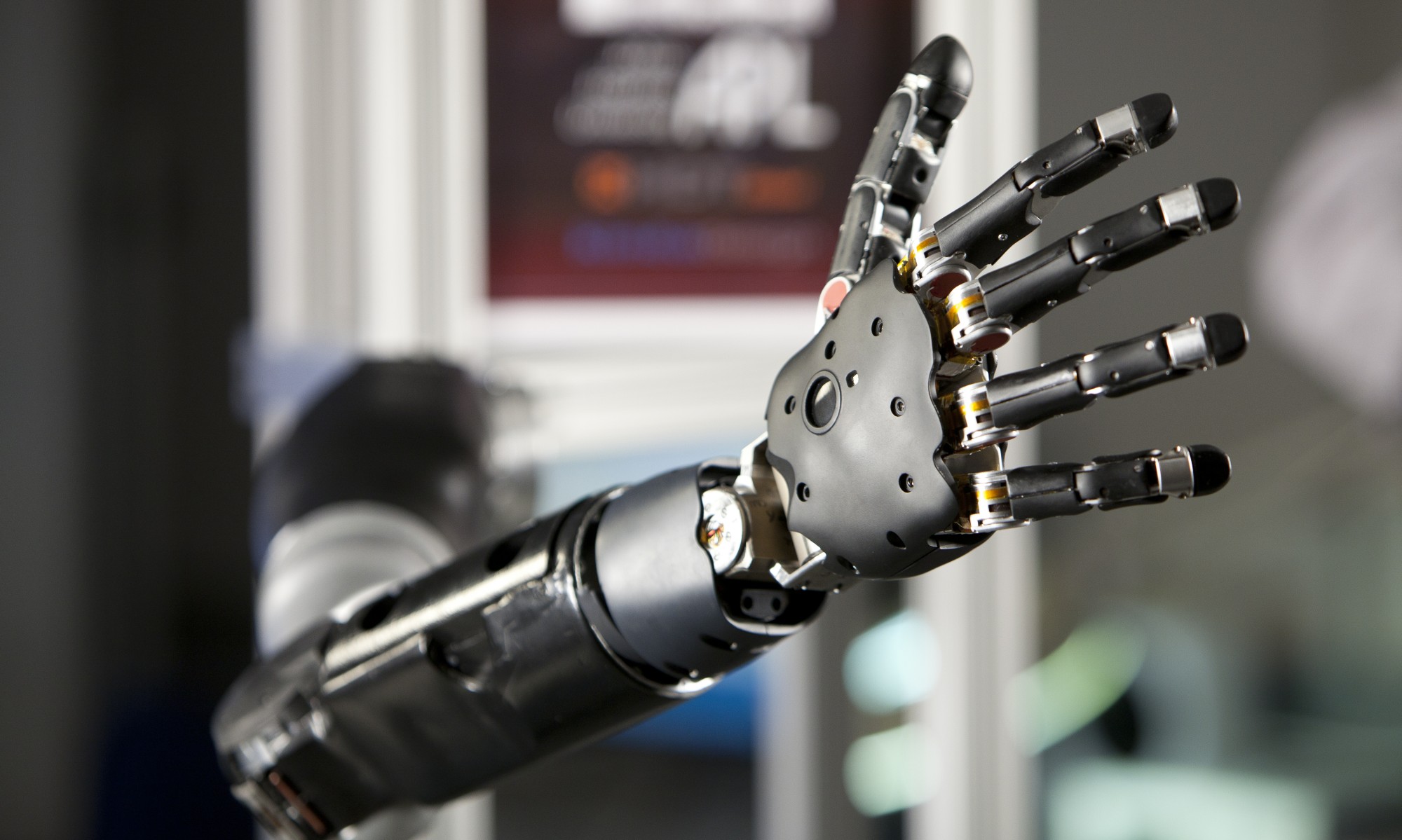Begun in 2006, the Defense Advanced Research Project Agency’s (DARPA’s) Revolutionizing Prosthetics program set out to expand prosthetic arm options for wounded warriors. The program funded two teams to create advanced anthropomorphic mechanical arms and control systems: DEKA Research and Development Corporation to get an arm control system to market quickly; and the other—with APL as the system integrator and lead—to produce a fully neurally integrated upper-extremity prosthesis with appropriate documentation for clinical trials and manufacturing transition.
The two teams developed two anthropomorphic, advanced, modular prototype prosthetic arm systems, including sockets, which offer users increased dexterity, strength, and range of motion over traditional prosthetic limbs. APL’s Modular Prosthetic Limb is a more complex hand and arm system designed primarily as a research tool.
Underlying the research, design, and development during all phases of the Revolutionizing Prosthetics program is the Virtual Integration Environment, modular and configurable to support various limb models and algorithms in order to facilitate highly dexterous control of an upper-limb prosthesis.
APL collaborated with researchers and physicians at Johns Hopkins Medicine throughout the life of this project. For instance, APL-JHM teams developed targeted muscle reinnervation, a surgical procedure that reassigns nerves that once controlled the arm and the hand. By reassigning existing nerves, doctors can make it possible for people who have had upper-arm amputations to control their prosthetic devices by merely thinking about the action they want to perform. Once experimental, this innovative procedure is now available at the Johns Hopkins Hospital.
APL researchers have also worked extensively with JHM and the Whiting School of Engineering on exploring ways to restore the sense of touch to individuals with arm amputations.
The MPL is now being used to test direct neural control of a prosthesis. In studies done in collaboration with JHM physicians, volunteers living with paralysis have demonstrated multi-dimensional control of the hand and arm using electrode arrays placed on their brains, as well as restoration of touch sensation via a closed-loop interface connecting the brain with haptic sensors in the arm system.
The RP program has developed neurotechnology to enable direct neural control of these systems, as well as non-invasive means of control. APL has also been exploring the restoration of sensation, connecting sensors to the arm systems and returning haptic feedback from the arm directly back to volunteers’ brains.

